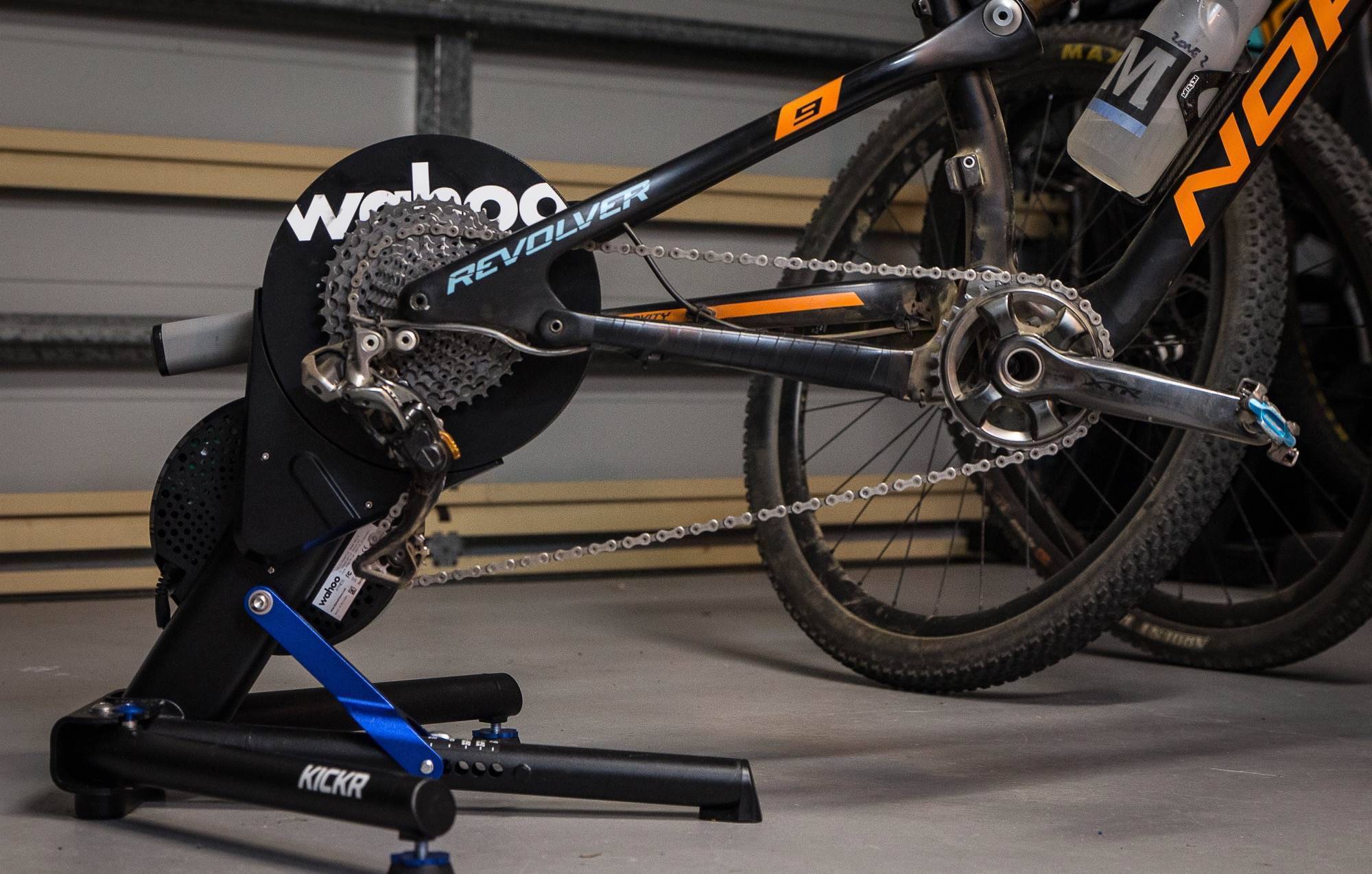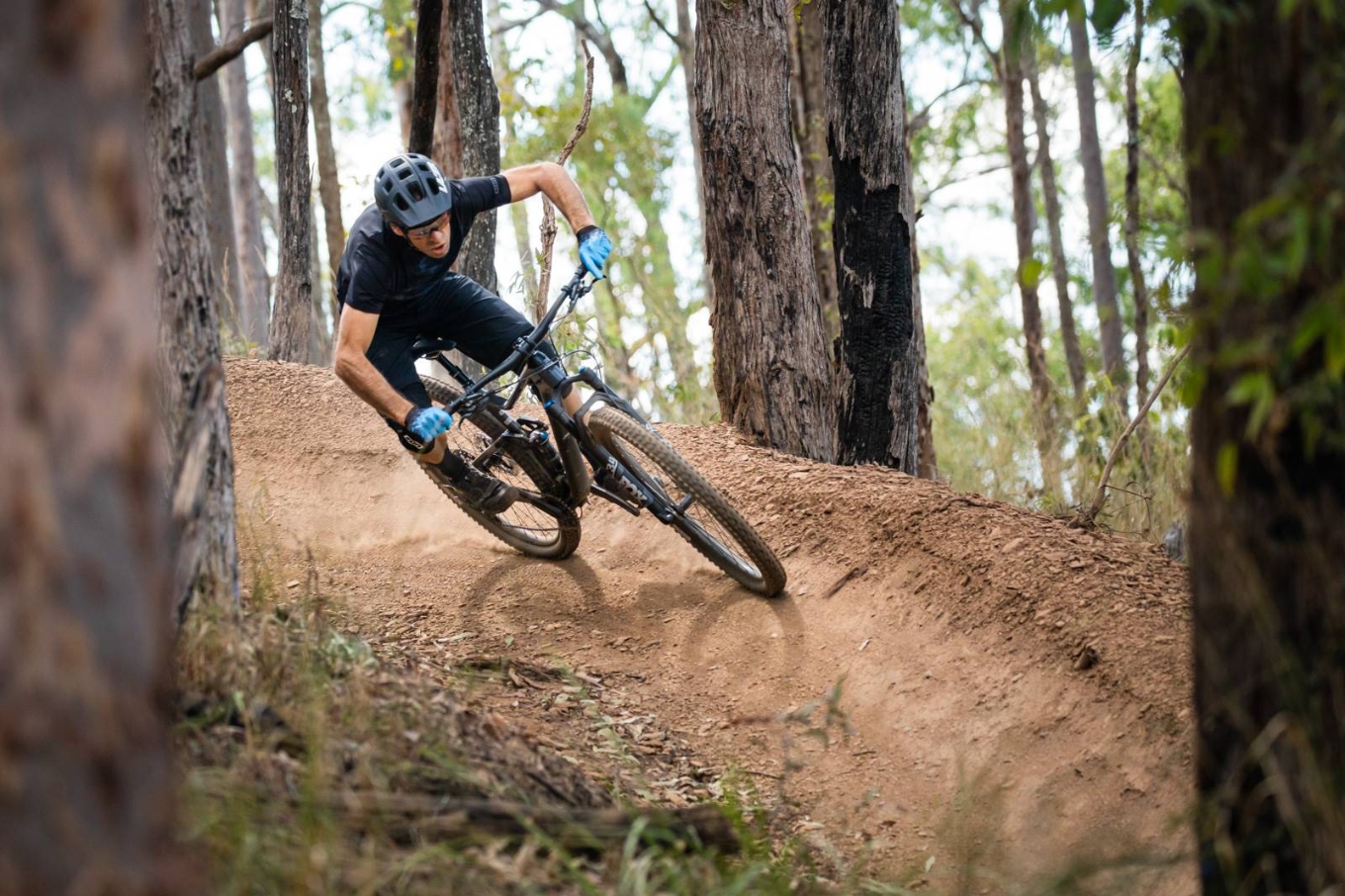TESTED: The Wahoo KickR
Trainers like the Wahoo KICKR exist as we can't always ride outside when we want to. But how real can they feel?
Review by Imogen Smith
The Wahoo KICKR is one of the best-known smart trainers on the market, which it shares with others such as the Tacx Neo Smart and the CycleOps Hammer. 2018 saw the release of the KICKR V4 in Australia, and the arrival of an immersive Wahoo ‘ecosystem’ of affiliated devices such as the KICKR Climb and the KICKR Headwind, which together with platforms such as Zwift or TrainerRoad make your indoor training a more immersive experience than it’s ever been before.
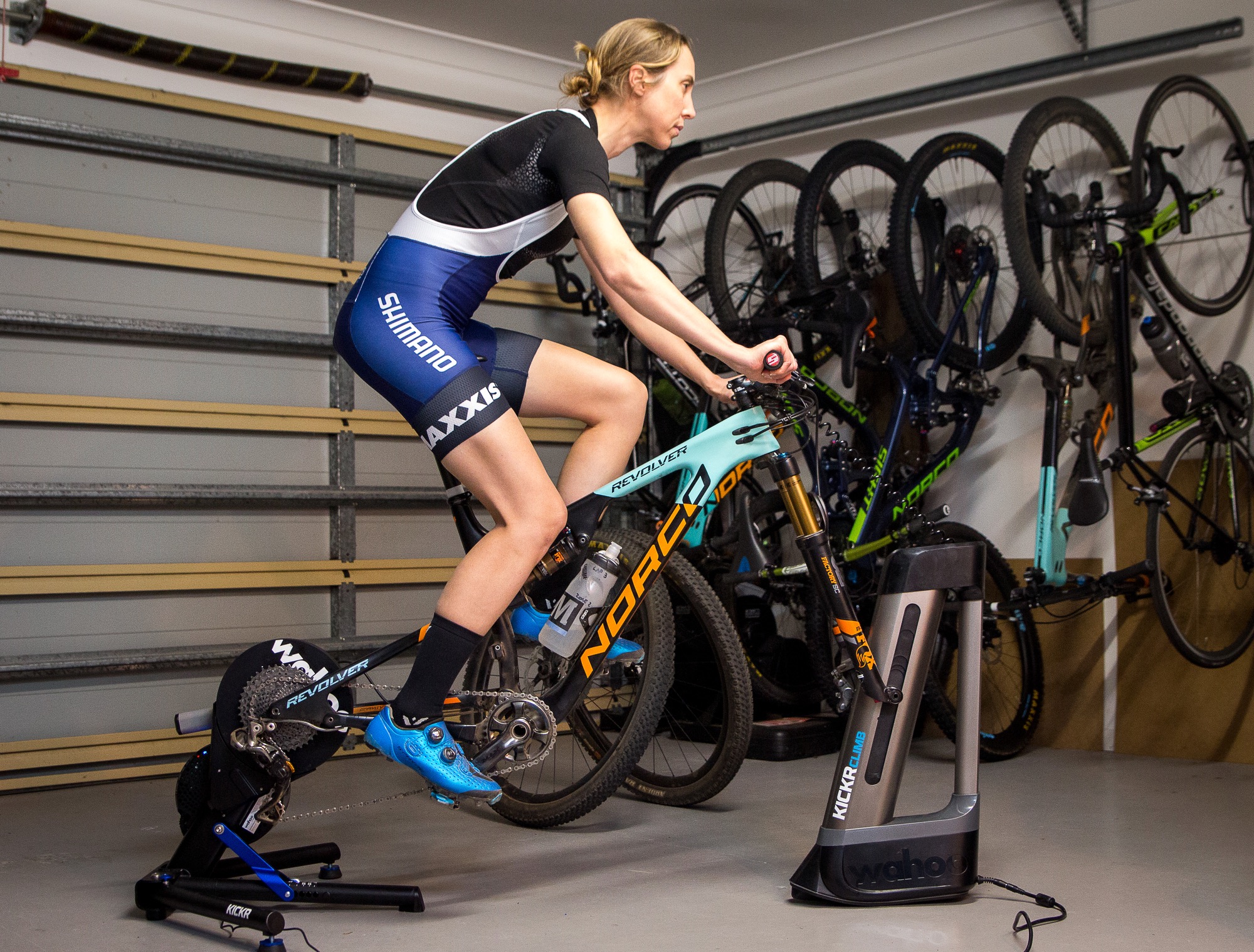
In case you’ve not heard of them, smart trainers communicate with apps on your phone, tablet, or desktop using Bluetooth or ANT+. Data such as power, cadence, and virtual speed can be manipulated manually or automatically. If you just want to ride, the virtual trainer acts as a power meter, and you can adjust difficulty to suit your feels. But there’s much more you can do. If you use a pre-programmed workout, the smart trainer alters its resistance to ensure you put out the desired watts. Smart trainers really come into their own when you use a virtual program such as Zwift or TrainerRoad or The Sufferfest. The smart trainer increases resistance when you hit a climb, and decreases it when you descend, or join a virtual bunch.
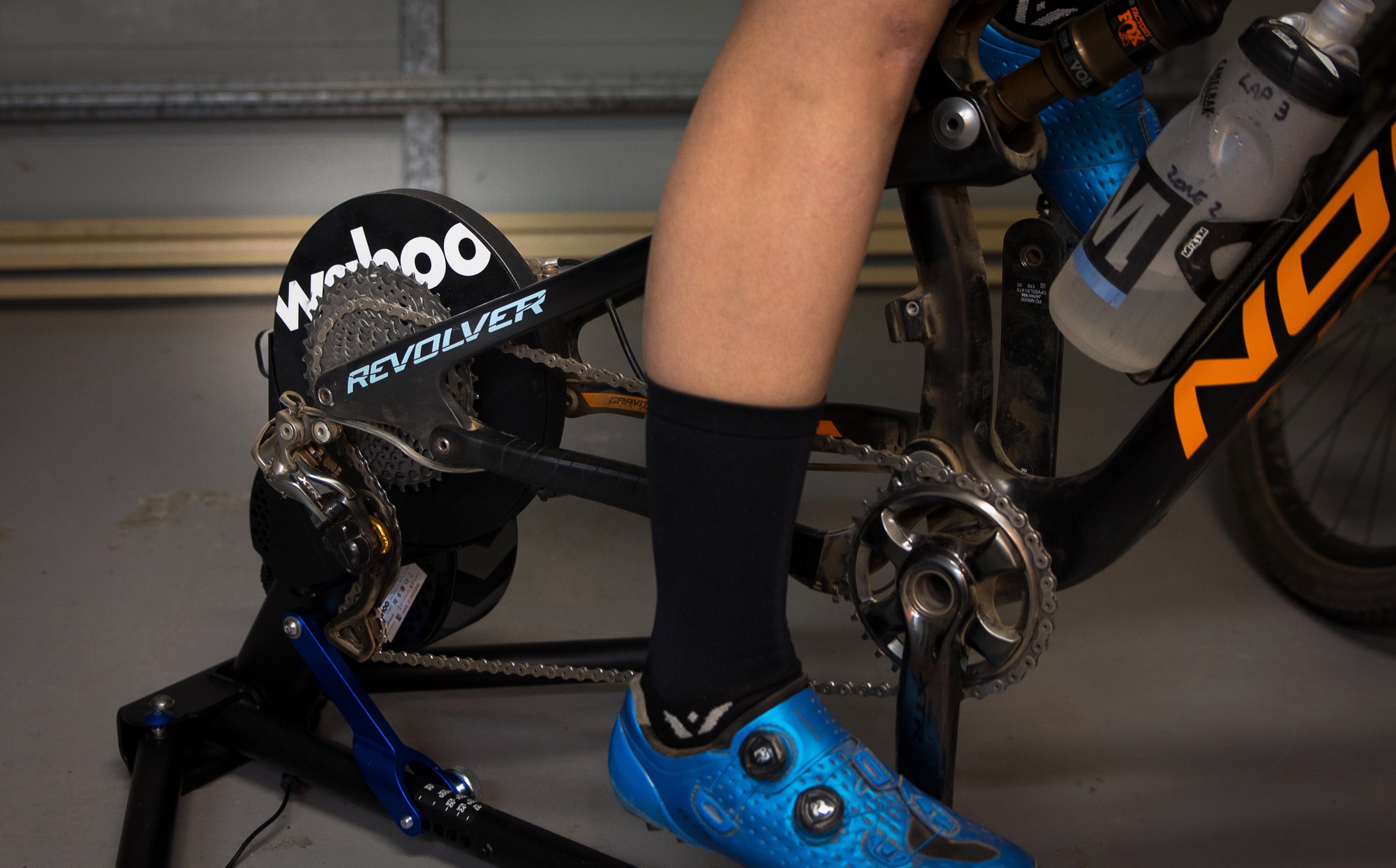
The KICKR V4 introduces a few improvements on its 2017 predecessor, the V3. It’s built around a larger flywheel that anchors the machine firmly to the ground, and can take power output up to 2,200 watts (anyone?). Whether you’re cracking out numbers like that or just cruising along at 200w, it generates perhaps the most realistic ‘road feel’ of any trainer we’ve tested to date because the bigger flywheel creates more inertia.
The V4 is also nearly silent. In fact, sitting on the KICKR V4 made us more aware than ever of the amount of noise a chain can make as it glides over the cassette. A quiet unit like this – without a rumble or so much as a centrifugal whine – is surely a revelation for those with timber floorboards, children, parents, or a partner who doesn’t mind you watching the TV over their shoulder while you throw down some high intensity intervals.
With the KICKR V4, Wahoo are taking the virtual training landscape a step further than their competiton. While perfectly functional as a smart home trainer on its own, the V4 is just one of a suite of Wahoo products that make indoor self-torture more life an actual ride outside. The most notable device in the Wahoo stable is the KICKR Climb, released to much hype mid-last year, but only recently landing in Australia. Your front hub attaches easily to a simple clamp, and syncs with the KICKR V4 itself, then electronically, silently, lifts and lowers your front axle to simulate climbs of up to 20 per cent gradient, and descents of up to 10 per cent. You can manually adjust the gradient too, if that's your thing. The benefit of this isn’t just that you’re more immersed in your Zwift or TrainerRoad ride experience, but that you actually feel like you’re climbing and engage the same muscles as you would on a real climb. The KICKR V4 supports 130/135mm QR, 12×142, and 12×148, while the Climb supports QR, 12×100, 15×100, 15×110. The 11-speed road cassette will work fine on your 11-speed mountain bike, but if you have a SRAM Eagle 12-speed bike you'll need to get a NX Eagle 11-50 cassette, which will fit the splined hub body.
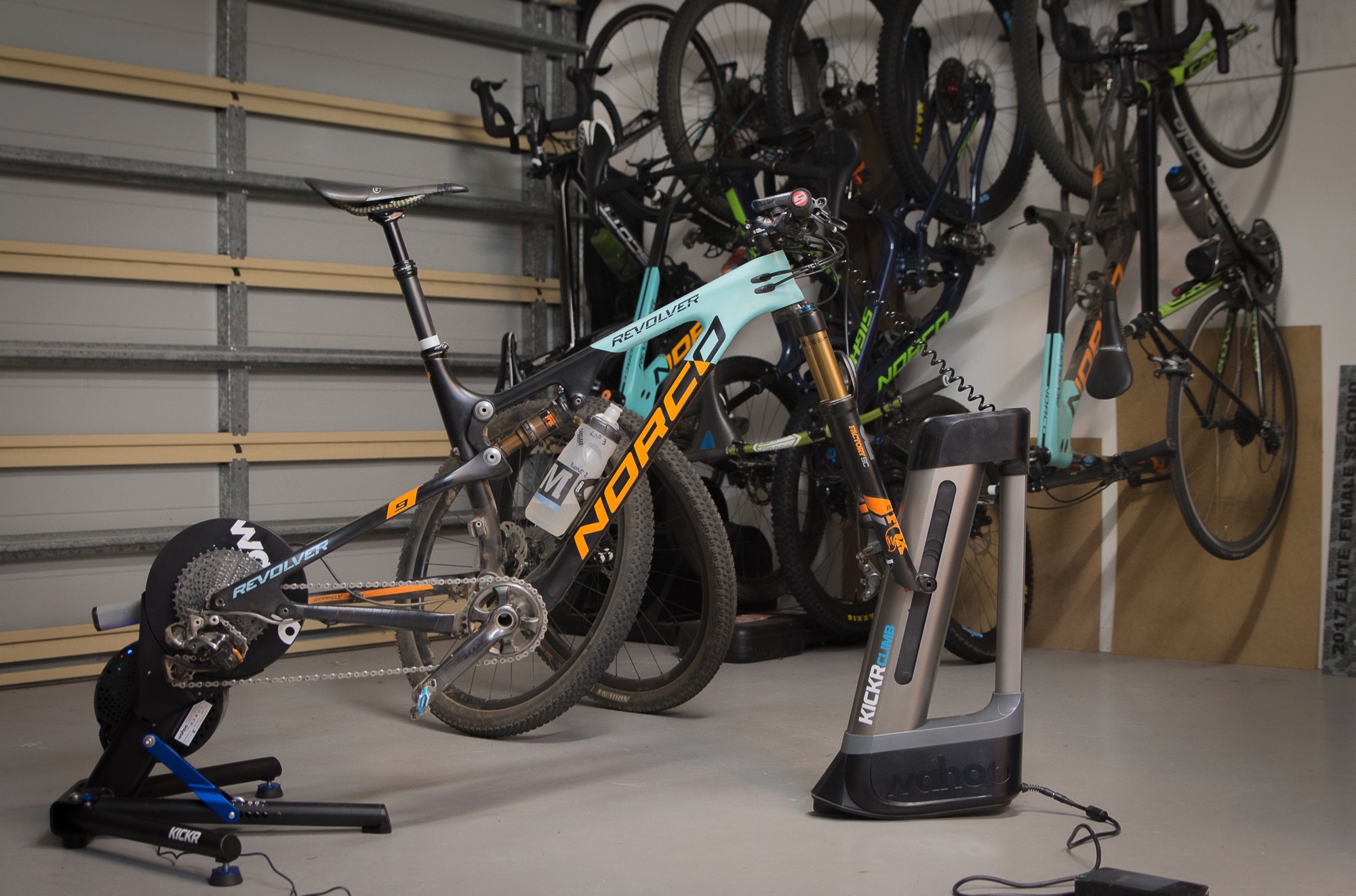
Also joining the KICKR Climb in the Wahoo indoor training suite are the KICKR Desk, which is just the right height to clear your front wheel or KICKR Climb and get you nice and close to your computer or tablet and your cycling app, and the KICKR Headwind, a fan that doesn’t only keep you cool, it pairs with your KICKR V4 to simulate the ‘wind-in-your-hair’ feeling of outdoor riding, lifting and dropping as you draft, descend, climb, and so on.
Starting out on the KICKR
The KICKR V4, like most home trainers, is pretty much a plug and play device. That said, there’s still the usual pfaff of removing wheels, screwing in axles and fitting disc chocks that comes with swapping your bike into most home trainers. On the technical side, there’s also a bit of setup, particularly when working out how to sync your workouts from other platforms for the first time, and to get everything calibrated using a spindown (a pretty quick and easy process). You’ll need a Bluetooth equipped or ANT+ device (or dongle).
There are a few ways you can use your KICKR on its own, using the Wahoo app to set level and resistance. You can run the trainer in erg mode, where you specify a power output (let’s say 200 watts), and the trainer sticks right there, no matter what cadence or gearing you use. Then there’s Simulation mode, which allows you to determine a gradient, bike type, headwind, weight, and so on, and the trainer does the rest, simulating outdoor riding. If you have a Wahoo ELEMNT Bolt or a Garmin Edge you can use them to program your KICKR, replaying outdoor rides you’ve enjoyed on sunny weekends in the virtual environment.
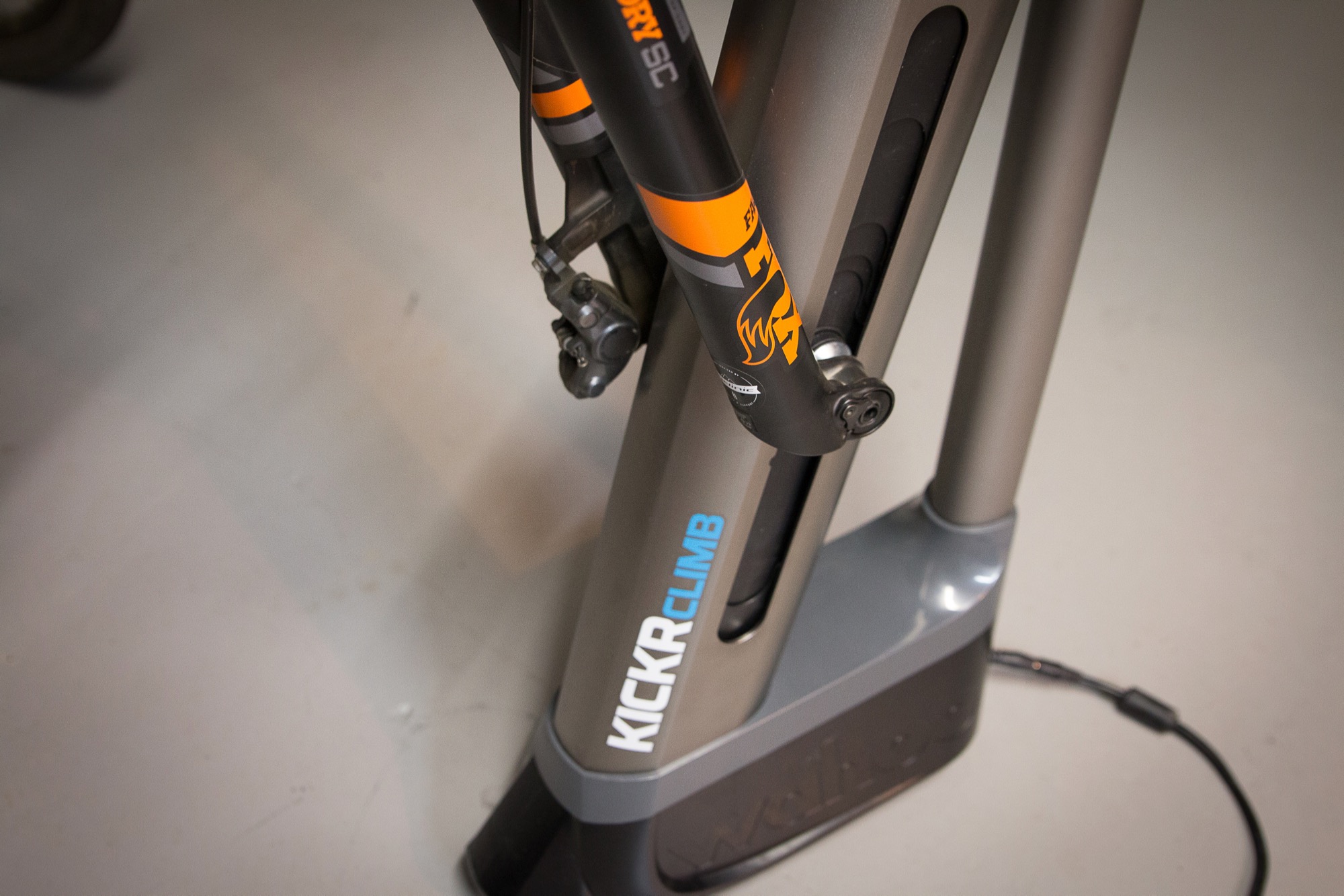
We took a KICKR V4 and a KICKR Climb to the AMB test dojo and ran it with Zwift, using both planned workouts and the ‘Just ride’ Zwift setting. As a smart trainer the KICKR V4 performed extremely well. The large fly wheel is really steady, but the bike isn’t so locked into the KICKR Climb to prevent a bit of the lateral movement that’s natural on a real bike riding outside, thanks to a slightly rounded base on the module. Used in conjunction with a planned workout, shifts in resistance synced in with our natural cadence pretty seamlessly and took some of the mental strain out of doing interval training – the thinking’s done for you, all you have to do is keep pedalling. Fitting a mountain bike to the KICKR V4 and the KICKR Climb was easy, and the V4 has a modified shape for improved clearance with disc brakes. The setup worked really well for general Zwift riding and for efforts. The KICKR Climb proved a refreshing addition to the traditional Zwift setup, adding a new layer of immersion and – wait for it – when that thing moves up and down it makes indoor riding fun.
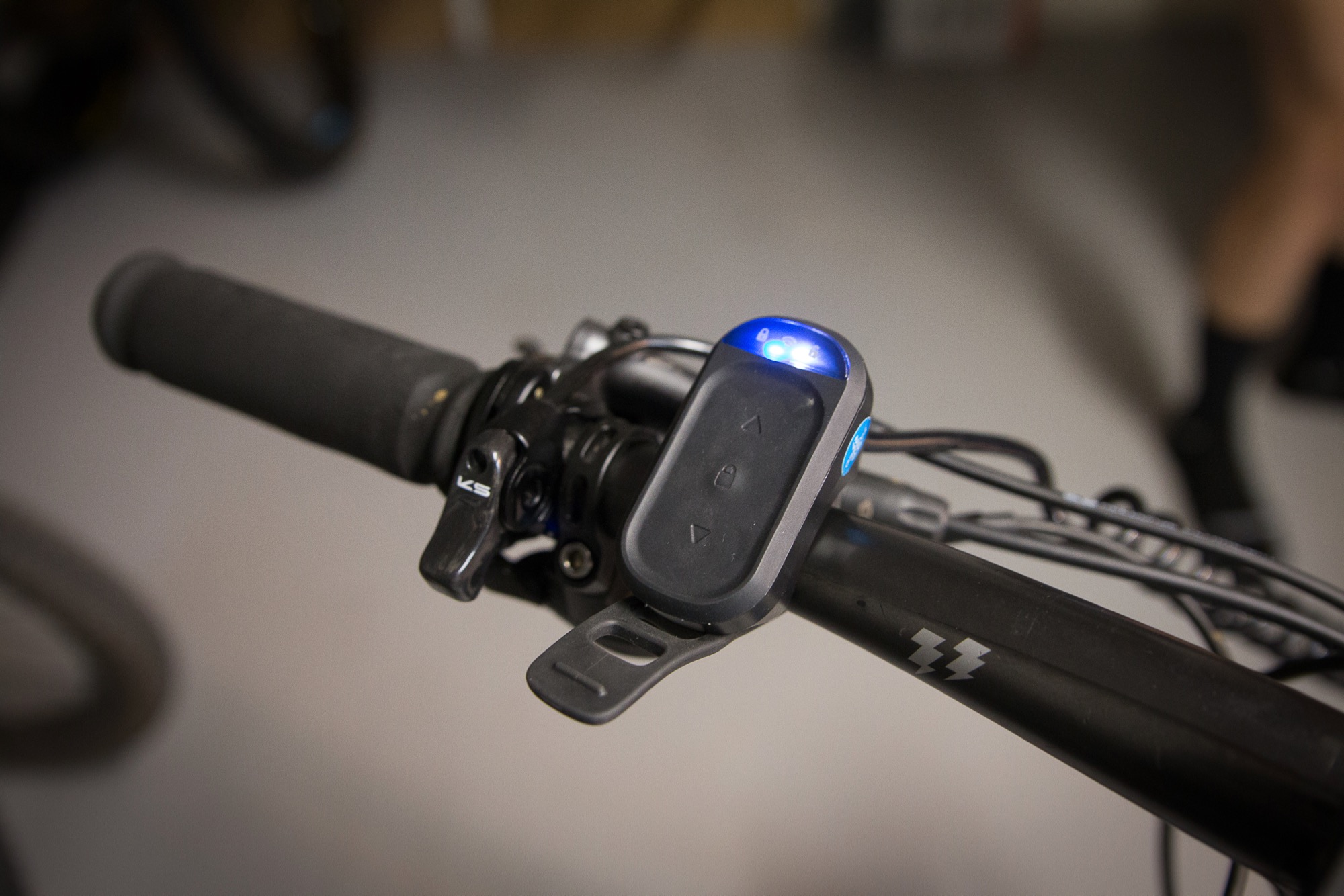
If you take a step back and think about it, the purpose of smart trainers like the KICKR, and add-ons like the Climb, Headwind, and Desk are all designed to make indoor riding, well, tolerable. With platforms like Zwift, the more realistic manufacturers can make your indoor experience, the more virtual, the better users like us feel about sitting in our garages sweating all over the concrete floor instead of being out on the trails with the sun shining on our faces. If you’re seeking a more immersive experience, it’s best to invest in a big-screen TV that’s setup where you’re doing your indoor riding, and to make best use of the social features of platforms like Zwift – using group rides and races. If you’re serious about training for fitness, too, there are heaps of ways the incredibly controlled environment of the smart trainer deliver. If you’re happy to invest in executing a structured training program, the power data and feedback can offer you a huge suite of benefits.
Is this for me?
Blessed, as we are in Australia and (some of) New Zealand with pretty wonderful weather a lot of the year round, at first, the KICKR system doesn’t seem like a must-have for everyone. That said, suppliers say that in Queensland, one of our hottest states, sales are steady year-round, with busy riders preferring to train in the comfort of an air-conditioned home than out in the excruciating heat and humidity of the long hot summer. And let’s face it – the weather might be the first reason we think of using smart trainers, but it’s not the only reason. Family commitments, a busy work schedule, safety, access to data for fitness nuts, and for some, the gamified, competitive environment available online all tip the balance in favour of making the next bike purchase a virtual one. And hey, stumping up $2400 for the system we tested could be a better alternative for you than buying one of those other training devices – a road bike.
So what’s next?
We can’t help but think that our generation is living through a transitional phase in home training technology – happily investing in the fax machines of indoor training – and that in a few years, instead of setting up in front of a giant TV screen we’ll throw a VR unit on our heads and take off in a completely immersive virtual training environment. Maybe there’ll be programs that support mountain biking, and an apparatus that simulates cornering and bunnyhopping, feedback through the bars, as well as climbing and descending.
Until technology catches up with what we mountain bikers really want in our garages, you’ll have to head to your local trail for that unique mountain bike adrenaline rush. In the meantime, the KICKR V4, Climb, Headwind and Desk, when paired with a software platform like Zwift or TrainerRoad, or a structured training program, could well be a viable alternative to a road bike with a power meter for many mountain bikers: it’s quiet, safe, focused, and interactive. And even a little bit fun.
Hits:
– The most interactive home training system yet
– Near silent operation and real outdoor feel
– Adaptability with 3rd party training apps
Misses:
– Quite expensive for the whole setup
RRP:
WAHOO KICKR V4 $1599.95
WAHOO KICKR Climb $799.95
WAHOO KICKR Headwind $399.95
WAHOO Fitness Bike Desk $299.95
WAHOO KICKR Trainer Floormat $109.95
From: au.wahoofitness.com

